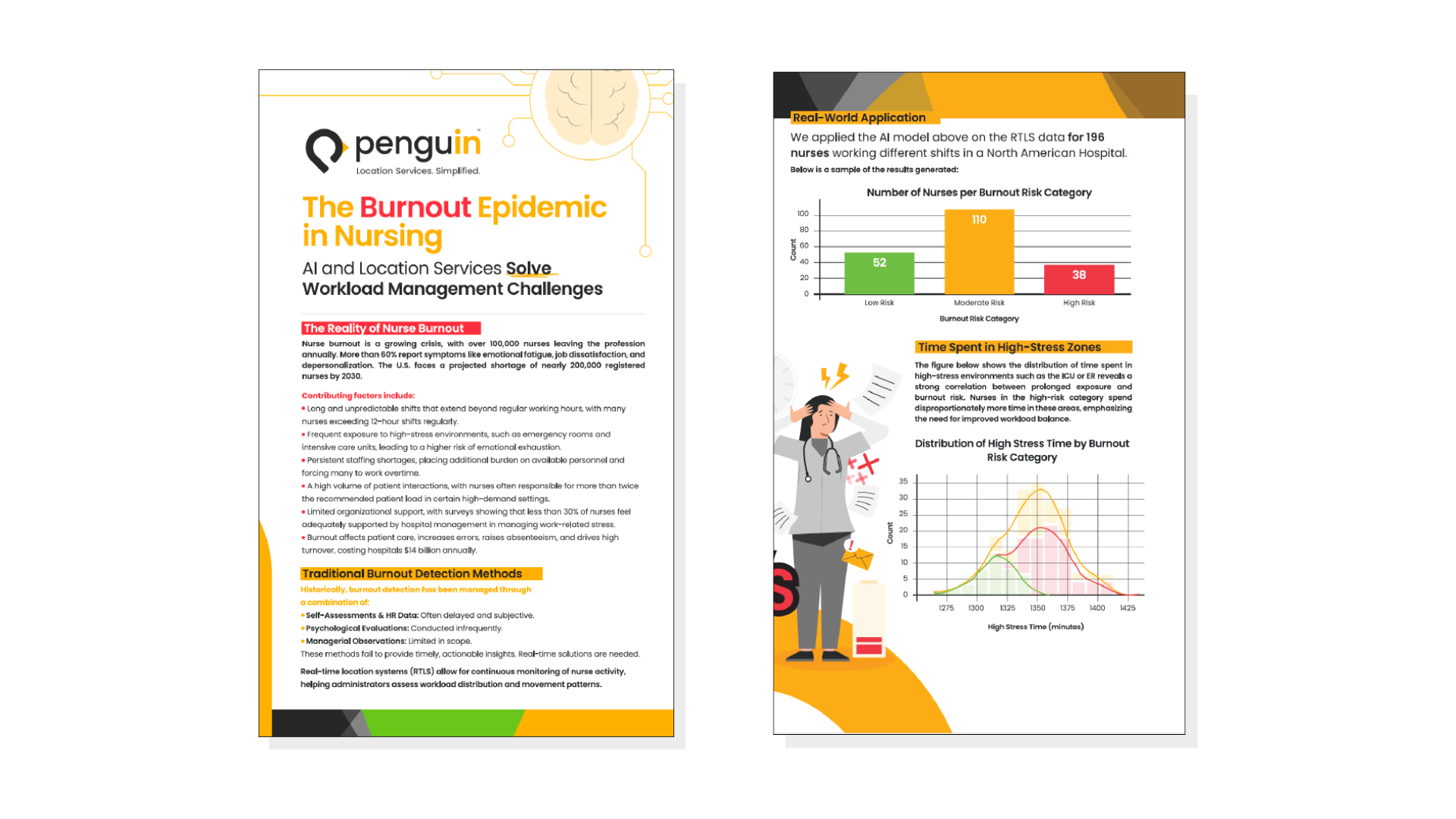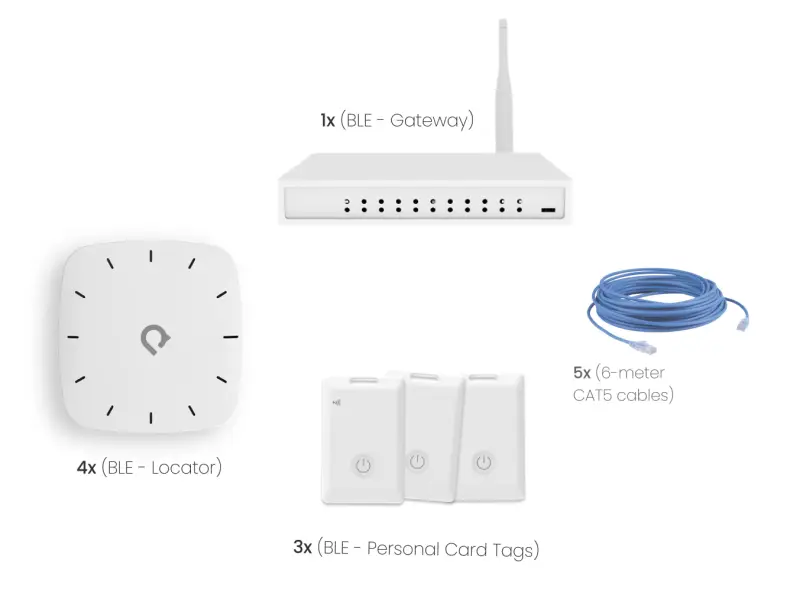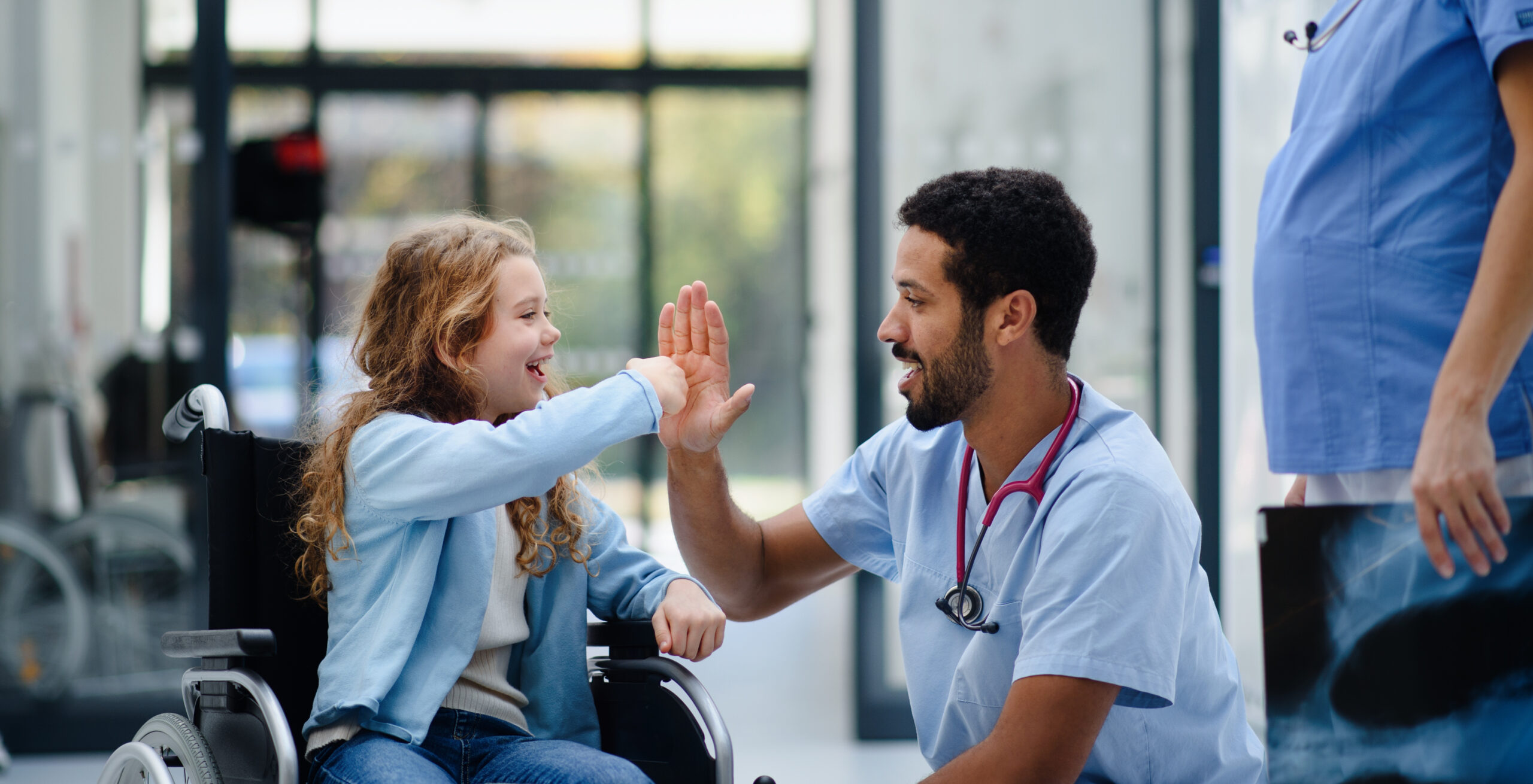
AI + Location Intelligence White Paper
AI and Healthcare RTLS: Driving Operational Efficiency in Hospitals Hospitals today face relentless operational challenges — rising costs, staffing shortages, patient dissatisfaction, and fragmented systems. Traditional management tools only offer retrospective data, keeping hospitals reactive instead of proactive. By combining Artificial Intelligence (AI) with Healthcare RTLS (Real-Time Location Systems), health systems can unify data, automate insights, and create a smarter, more connected environment. This next-generation approach—known as Operational Intelligence (OI)—empowers leaders to act in real time rather than after the fact.

The Burnout Epidemic in Nursing
rtlsNurse burnout is a growing crisis, with over 100,000 nurses leaving the profession annually due to excessive stress and exhaustion. Staffing shortages, long shifts, and high-stress environments put immense pressure on healthcare professionals—leading to higher turnover, lower job satisfaction, and compromised patient care. This white paper explores how AI-driven analytics and Real-Time Location Systems (RTLS) can help proactively detect and prevent burnout.

Buyer’s Guide for Asset Tracking in Healthcare
Buyer’s Guide for Asset Tracking explores how Real-Time Location Systems (RTLS) can revolutionize hospital operations. Discover how leading healthcare facilities are reducing equipment search time, optimizing resource utilization, and saving millions annually. This guide breaks down key technologies, best practices, and vendor selection strategies to help you choose the right solution for your hospital.

BLE 5.1 + Advanced Location Algorithms
A technical review of BLE 4.0 and the advancement of BLE 5.1 using much more sophisticated location algorithms. Using BLE 5.1 + Advanced Location Algorithms Penguin is uniquely positioned to make RTLS more accessible and affordable for enterprises worldwide.

Staff Duress & Panic Alerting – Solution Brochure
Discover our PenSafe staff duress solution tailored for healthcare professionals. Explore how our scalable location technology enhances safety and efficiency for caregivers, empowering them to work in smarter, safer environments with advanced technology applications.

PenNav – Advanced Navigation & Wayfinding
PenNav offers operations managers a platform to create, and update 2D/3D maps, points of interest (POIs), categories, department, routes and much more.

PenSafe – Location-enabled enterprise safety applications
PenSafe utilizes business rules to track the real-time location of individuals and assets with pinpoint accuracy at both room and sub-room levels, fostering secure environments in healthcare, education, and industry sectors.

Pen-IQ Kit flyer Vol.1
Our new easy to install Dev kit comes with full access to Ai-driven location algorithms.

PenTrack – Asset tracking to improve resource management
RTLS tracking solutions powered by advanced location algorithms designed to improve operations, productivity and enterprise efficiency.

What’s Next for RTLS?
RTLS in Healthcare: Spearheading Healthcare Efficiency With BLE What's next for RTLS? As the healthcare industry continues to grow, RTLS technology has become a key factor in ensuring the healthcare sector reaches new heights in efficiency. This white-paper explores how leveraging Bluetooth Low Energy (BLE) 5.1, can help drive efficiency. By providing more responsive and in depth asset tracking, patient safety, and staff workflow optimization. We begin by tracing the shift away from legacy technologies such as infrared, ultrasound, and proprietary RFID systems. To more affordable, scalable, and adaptable technologies which implement BLE in their infrastructure. This white-paper largely focuses on real-world use cases ranging from asset tracking and way-finding to cases such as patient safety and hand hygiene compliance. All of which are positively impacted through the use of RTLS in healthcare. Download this white-paper to learn more about how RTLS in healthcare is no longer just an option but an essential tool. Helping to guide healthcare into a future full of better care, smarter operations, and a safer experience for all.
